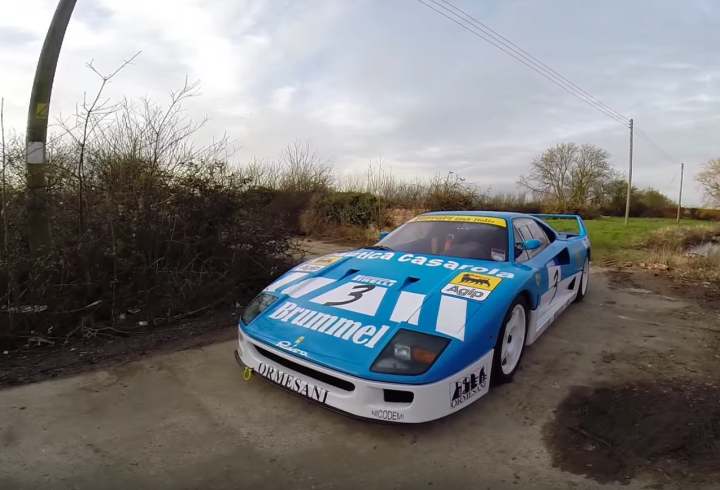
Enthusiasts might cringe at just the thought of how these activities might damage such iconic cars, but it’s hard to deny the entertainment value. And the hits keep on coming as TTR has just released a new video featuring a Ferrari F40 and a Farm.
More specifically, this is the Ferrari F40 GT version, of which only seven examples were produced between 1991 and 1992. The GT was made unique by a reinforced chassis, a racing interior, stiffer suspension, up-rated brakes, competition gearbox, wider wheels and a specially prepared engine that produced 590 horsepower.
A warning to all Ferrari lovers: this special livery F40 was not treated with the kindness it deserves, but more the careless whims of a 17-year-old steering a beater Honda Civic. The video’s title, “Farmkhana,” alludes to its Gymkhana-esque experience. At least the potential damage is far less than some of TTR’s other videos. And at the very least you can close your eyes and enjoy the sound of a howling V12.
It does make you wonder how much money these guys are playing around with in this video, though, considering prices for a standard F40 have crested $2 million recently. With such a rare example of an already-rare car, TTR might as well be hooning a Porsche 918 Spyder, Ferrari LaFerrari, and McLaren P1 all at once for less of a potential loss.
Alas, I’d still say it’s better to drive a Ferrari F40 like a maniac than to never drive it at all — a sin which many collectors are guilty of committing.


